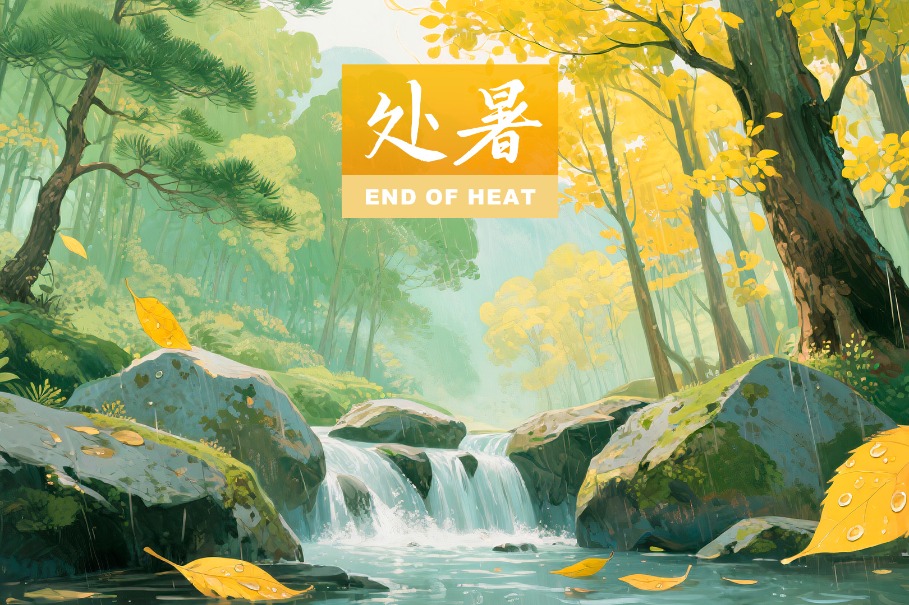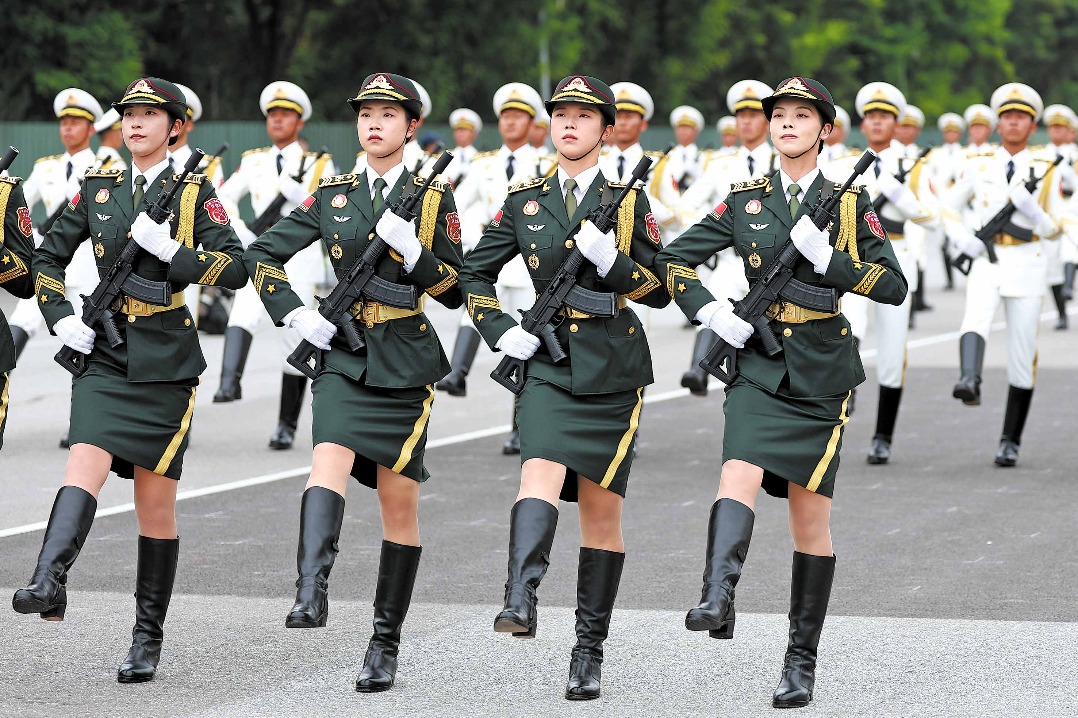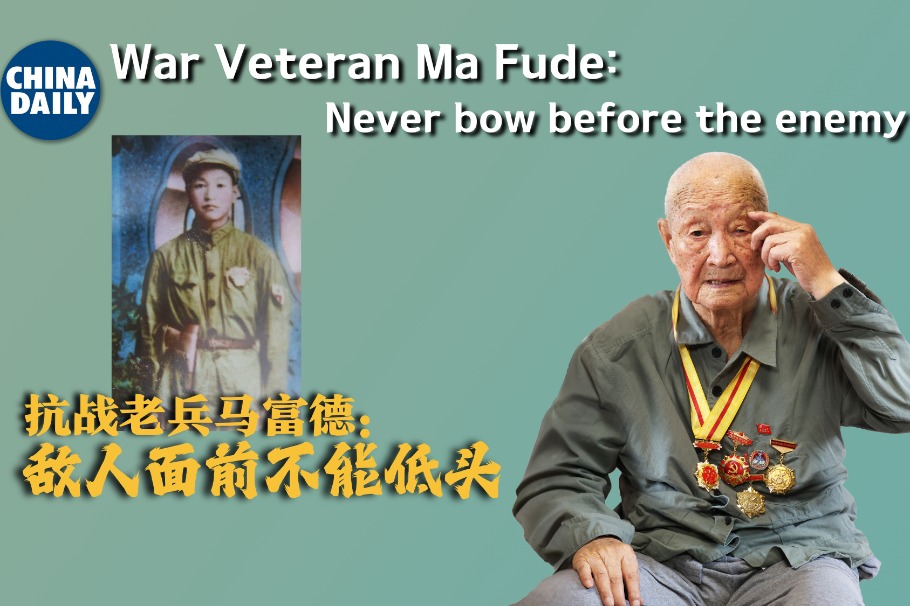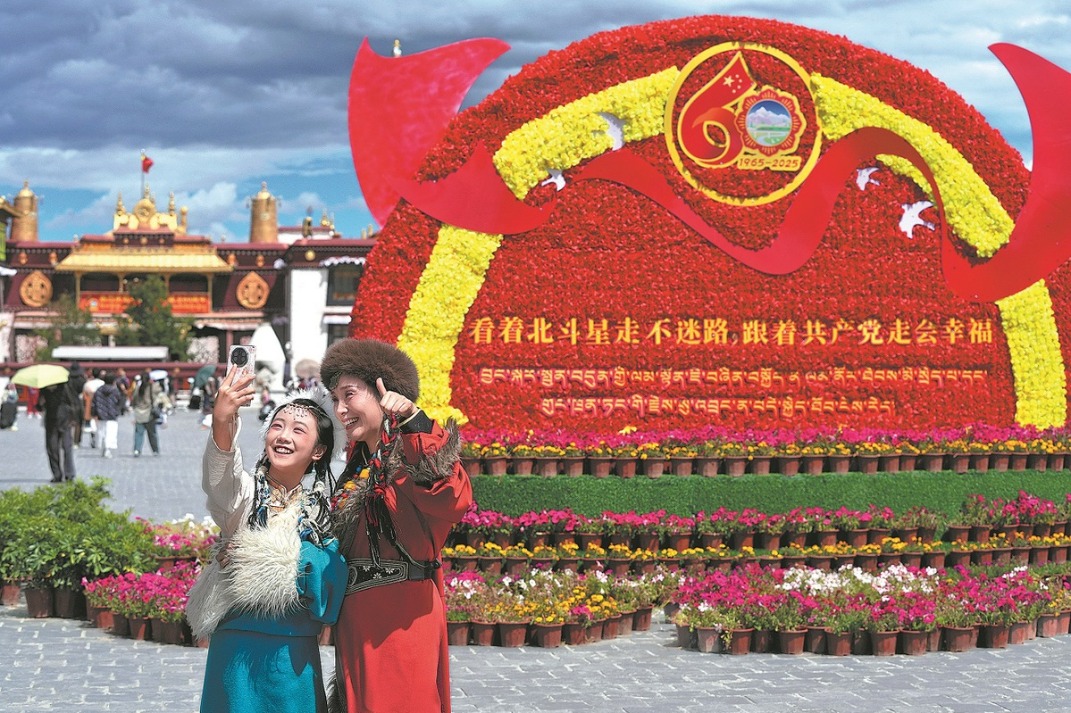Having a ball
Inheritors use the platform of the World Cup to promote cultural exchanges through the ancient Chinese sport of cuju, the forebear of modern soccer, reports Zhao Ruixue in Jinan.

While the recently concluded World Cup was in full swing in Qatar, the people of a particular city in China were busy making soccer history of their own.
Zibo, a city in Shandong province, was named in 2004 by soccer's governing body, FIFA, as the "home of soccer", based on the fact that the ancient Chinese sport of cuju was acknowledged by FIFA as the earliest form of soccer.
"Many people buy cuju sets to play for fun, or use as a gift to give to friends," says Yu Jian, an inheritor of cuju equipment manufacturing in Linzi district of Zibo city.
Sales during the World Cup are usually at least twice that of normal, he reveals.
Cuju was an ancient Chinese game involving the kicking of a ball. Its origin has been traced back to the Linzi district, which was the capital city of the ancient Qi state, a state that existed for more than 800 years during the Spring and Autumn Period (770-476 BC) and the Warring States Period (475-221 BC).
The word cu means to kick, while ju refers to an ancient type of leather ball stuffed with feathers or grain chaff.
Cuju is recorded in the ancient Chinese historical text Zhan Guo Ce (Strategies of the Warring States), which describes it as one of many forms of entertainment among the public.
Historical books show that, during the Han Dynasty (202 BC-AD 220), cuju was commonly played by soldiers for military training purposes. During the Tang Dynasty (618-907), women played cuju at the royal court for the entertainment of the emperors.
Cuju flourished during the Song Dynasty (960-1279), extending its popularity to every class, before its decline during the Ming Dynasty (1368-1644), which saw the 2,000-year-old game slowly fade away.
In 2006, cuju was listed among China's first batch of intangible cultural heritage items.
Yu, in his 60s, has been studying and making cuju equipment for nearly two decades. In his workshop, cuju balls stuffed with cotton and made with four, six or eight leather panels are on show.
"The manufacturing techniques evolved during different times. For example, the balls were stitched together with four pieces of leather during the Qi state, and in the Han era, it was six pieces," says Yu.
All of the cuju balls made in Yu's workshop are handmade. His cuju products have been sold to more than 130 countries and regions.
To protect and promote the manufacturing techniques of cuju balls and equipment, Yu provides courses for students who come to his workshop to study and try their hand at making cuju equipment, welcoming around 10,000 people every year.
Students in Linzi are not only learning how to make cuju equipment, but also playing the game as a form of exercise and to master the techniques of playing this ancient style of soccer.
"Side-flicking", "chest down "and "shoulder stopper" are some of the essential moves mastered by cuju players. Li Weipeng, a seventh-generation inheritor of cuju, has been practicing these skills for 18 years.
The 34-year-old is now perfect at different cuju techniques. However, when he joined the cuju team in 2004, he was stumped by the simplest of moves, even though he had been playing football for a decade.
Li had undergone professional football training since he was 8 years old. In 2004, when the cuju team in Linzi was looking to recruit players, he signed up.
"At the beginning, I spent eight hours a day practicing juggling a ball. It was exhausting," says Li.
When Li could juggle a ball hundreds of times in a row, he started practicing other skills such as side-flicking and "chest down".
Li is now able to juggle a ball with his foot over 10,000 times in a row.
Linzi district has been promoting the ancient game at the campuses of each primary and middle school. Cuju moves have been adapted into dances and morning exercises.
Teaching students cuju techniques is a part of Li's job.
"Students show great interest in playing cuju, which encourages me to promote the ancient sport," says Li.
During the World Cup in Qatar, Li gave a demonstration of cuju at a China-Qatar youth exchange activity held in Doha. He led Chinese and Qatari youth players, wearing traditional cuju costumes, to experience the ancient game and see for themselves the similarities and differences between cuju and modern football.
"As soon as we started, many football fans gathered around us. When we demonstrated the different moves, they cheered for us and gave us the thumbs-up," says Li, adding that many people were curious and keen to interact with the cuju players.
"Cuju, the ancient Chinese game, has gone beyond sport. It has become a platform to enhance exchanges and mutual learning among different civilizations," says Yu.
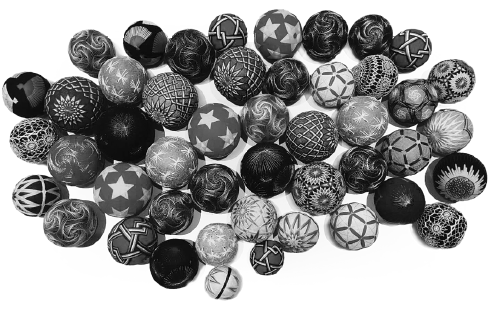
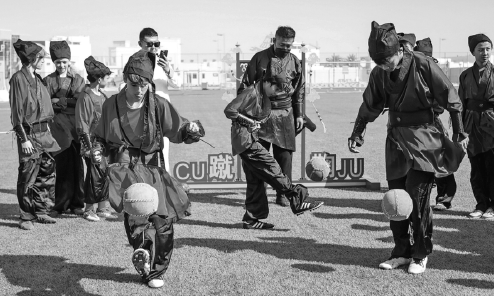
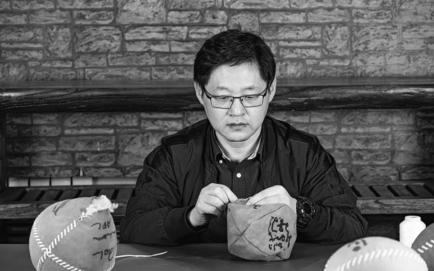
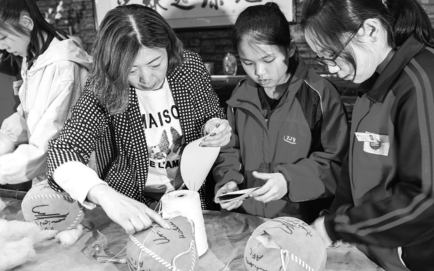
Today's Top News
- China, Japan, ROK urgently need an FTA
- From humanoids to parallel intelligence
- Shared wartime history unites nations, envoy says
- Mutual trust reaffirmed in visit
- 12 dead, 4 missing after bridge collapses in Qinghai
- Steps taken to boost domestic consumption
















